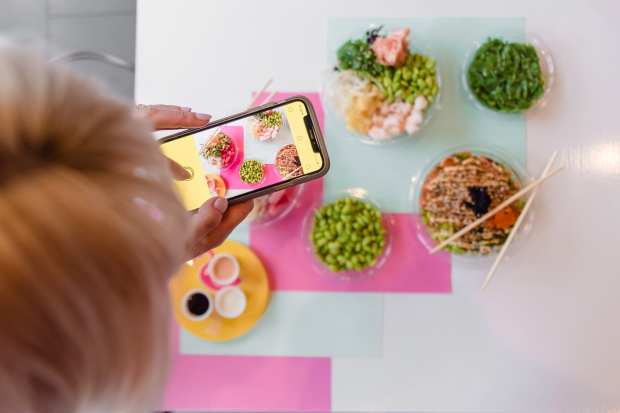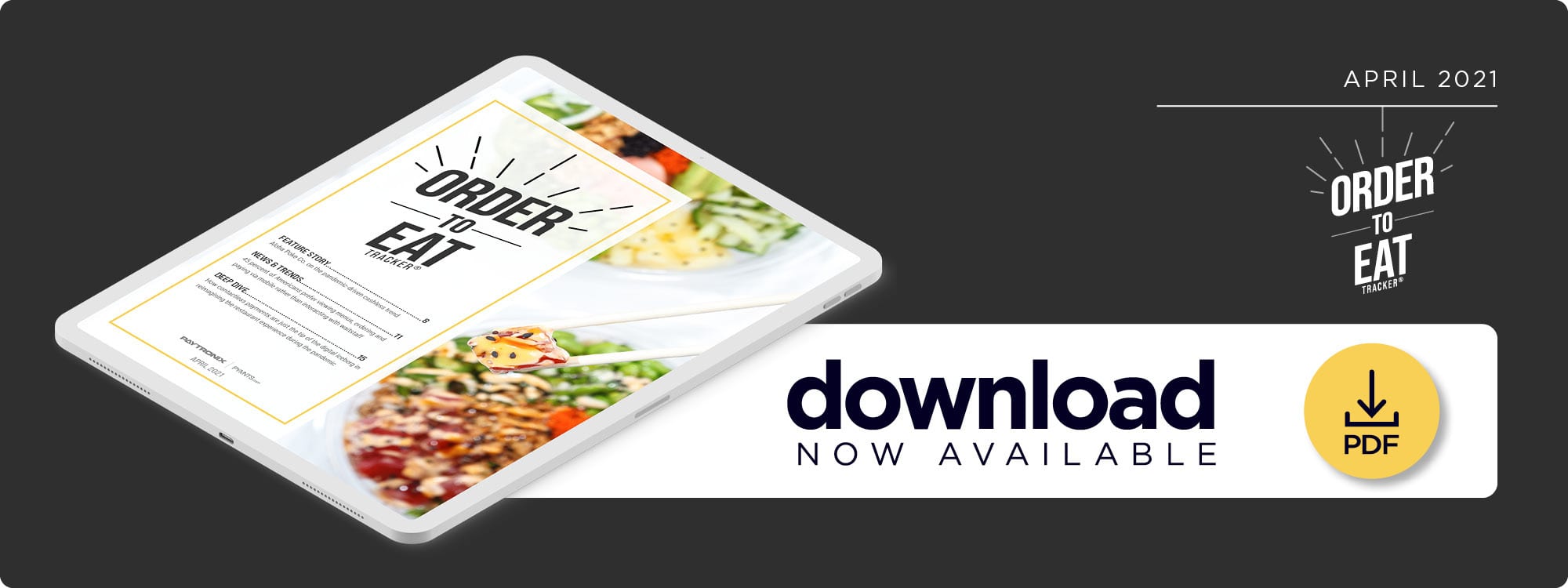Aloha Poke Co. On The Pandemic-Driven Cashless Trend

The pandemic is making cash all but a nonstarter for today’s no-touch customers – and restaurants that can’t deliver touchless payments will find themselves in hot water. In the Order To Eat Tracker, Chris Birkinshaw, CEO of poke bowl chain Aloha Poke Co., explains why the rapid shift to cashless transactions has made contactless offerings imperative.
Poke bowl quick-service restaurant (QSR) chain Aloha Poke Co. was an all-cash operation when it launched more than five years ago in a 300-square-foot indoor stall at the Chicago French Market in the Ogilvie Transportation Center.
The chain, which offers bowls of sushi-grade fish and Hawaiian-inspired ingredients, is now nearly completely cashless, with additional locations in Florida, Minnesota, Wisconsin and Washington, D.C. Aloha Poke plans to open a location in Texas as well.
Just 9 percent of Aloha Poke’s order transactions were made using cash before the pandemic began. The percentage of customers who use cash today has dropped even further to the low-single digits, according to Aloha Poke CEO Chris Birkinshaw.
“We are not cashless across the board, but it made total sense [to] not have to worry about having a safe in the store or having cash on hand,” Birkinshaw told PYMNTS in an interview. “… Going cashless was absolutely a no brainer. But some places, like in Wisconsin, for example, our customers really want to use cash.”
Tourists who visit Aloha Poke locations — especially international tourists — have tended to use cash, he said. This habit changed during the pandemic, when tourists and regular customers shifted to using credit cards in an effort to go touchless and decrease the probability of brushing staffers’ hands.
“The shift to cashless occurred almost overnight when the pandemic struck,” he said. “There were fears about transmitting the virus, and that was combined with the coin shortage. … It still baffles me when somebody uses cash.”
Aloha Poke locations still accept cash, but such transactions are minimal, Birkinshaw said. Customers are trending toward tap-and-go credit card or online payments, he explained — and not just for this QSR but across the entire sector.
Mobile Ordering Challenges
When it comes to ordering favorite menu items, customers can order on location, on the company’s website or through a variety of third-party delivery services, such as DoorDash and Uber Eats, Birkinshaw said. One way Aloha Poke customers cannot order just yet is via a branded mobile app, although the chain is currently developing one that will debut this summer. Birkinshaw said he expects entering this competitive space could come with its fair share of challenges, however.
“It’s nice to have, but it’s kind of a crowded field with Starbucks, Domino’s [and] Chick-fil-A as the best-in-class apps, and then it kind of trails off pretty fast,” he said.
A mobile app is a great way to reach your most engaged customers, but smartphone screen space is limited, he said, and many consumers do not want to install too many restaurant apps.
“Maybe 20 percent of your most engaged customers will actually download an app and frequently use it, especially if that download comes with a free meal or a free item or a 50 percent off coupon,” Birkinshaw said. “But evidence suggests a customer will use it once and perhaps not again.”
Digital ordering and digital payments are the future, he said, whether referring to online ordering or ordering through apps or QR codes. Takeout comprised about 50 percent of Aloha Poke’s orders prior to the pandemic, about the same as it is now.
“For me, I can either call a restaurant or use its online ordering platform … or use an app for some function, make an order, get in the car, drive to pick it up and drive home and save $30 and control the experience,” he said.
Food delivery services’ use has grown significantly since the start of the pandemic as consumers have turned to eating at home rather than risking exposure in restaurants. For the fourth consecutive year, a third-party delivery app topped the list of the most-downloaded food and beverage apps in the U.S. in 2020. Fast food apps, including McDonald’s and Chick-fil-A, also gained ground last year while grocery delivery app Instacart appeared on the list for the first time. These movements indicate just how much more heavily consumers are relying on apps to order food to their homes.
One thing is clear: More digital innovation is needed in the QSR sector as customers decrease their reliance on cash and seek out new, contactless ways to pay. Consumers continue to prefer to do business with companies that offer contactless payments, and restaurants should be sure to provide the experiences they crave.

